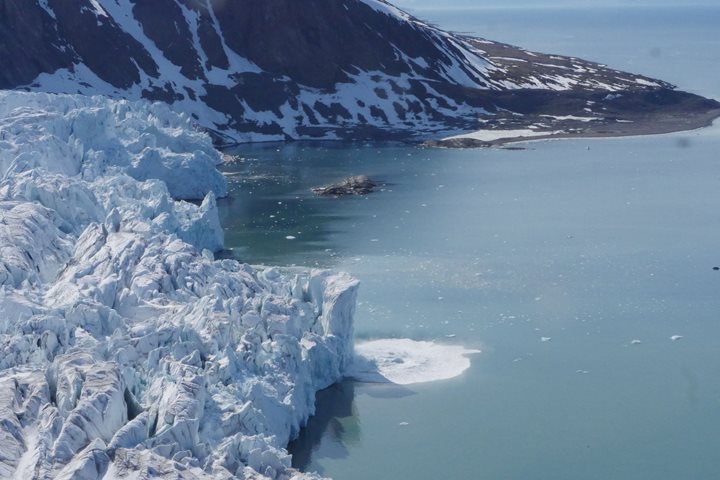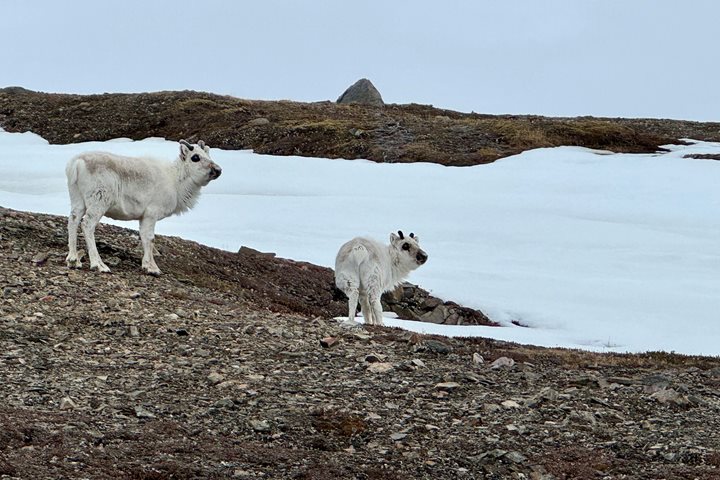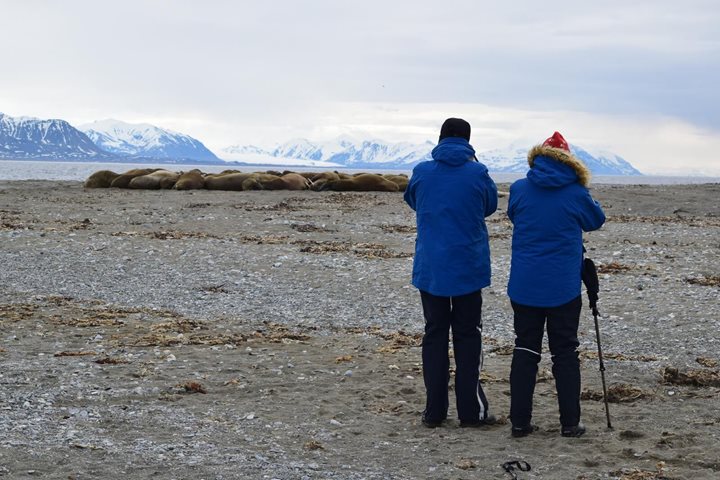As our expedition leader, Stefano Pozzi, had predicted, the 50 knot gusting winds gave us a rocking night’s sleep, but National Geographic Endurance being such an awesome ship, made it feel like we were being rocked soundly to sleep like babies. We were headed for a fjord on the west coast near a beautiful bird cliff, Gnålodden. Here, there was a sheltered bay where the beautiful looming mountains protected us so we managed a safe but wild landing. The adventurous guests and staff who made it to land saw arctic foxes, beautiful flowering saxifrages, a pair of arctic skua, and nesting glaucous gulls. The steep cliffs were dripping with lovely black-legged kittiwakes. There were more birds than land on the shore, which made for an incredible landing. Ice had drifted in along the shoreline, giving excellent close-up photography opportunities for guests brave enough to bring their cameras onto the rainy landing site. When we all returned, the crew had set up Baileys, Kahlua, and hot chocolate drinks to warm the arctic-blown guests and staff.
After a well-deserved lunch of burgers, a pod of belugas appeared in Burgerbukta! There were two young calves and a suspected beluga with a deformity, which was amazing to see as it was not a young beluga but an adult. This beluga had a deformed spine, giving it odd bumps and ridges along its back. We hope the family pod continues to support this amazing beluga, surviving and thriving in the wild Arctic. After the pod moved off, our education programme kicked off with our naturalist Alice giving a presentation on Seabird Migration in Svalbard. She raved about arctic terns and all the reasons why birdlife is so abundant in the archipelago. Whilst she was presenting, the undersea team braved going out into the still stormy weather with an ROV to take some footage at 85 m depth, showing shrimps and stalked anemones at the silty fjord basin.
Following Alice’s talk, we had another presentation by National Geographic photographer Erika Larson, who previewed her short film on how the Sami people live and work with reindeer. The video showed the Sami living amongst a harsh and never-ending arctic tundra with expansive scenery. It told the story of the respect for the reindeer, their community, and their drive to work and live in this phenomenal landscape that is their home.







